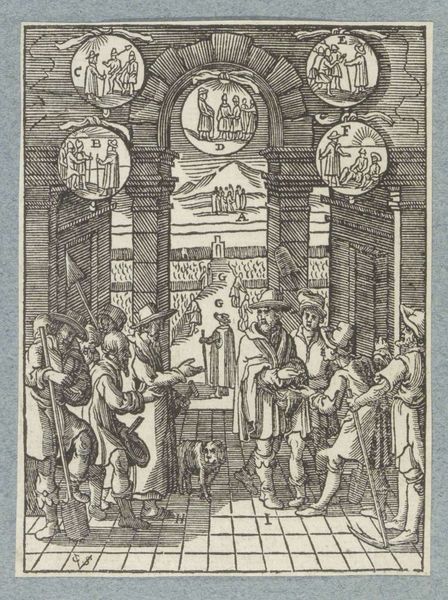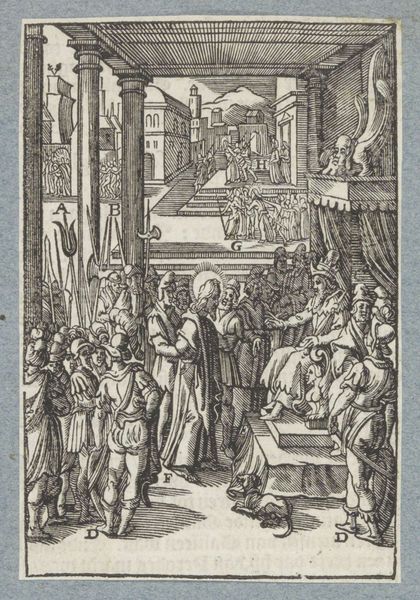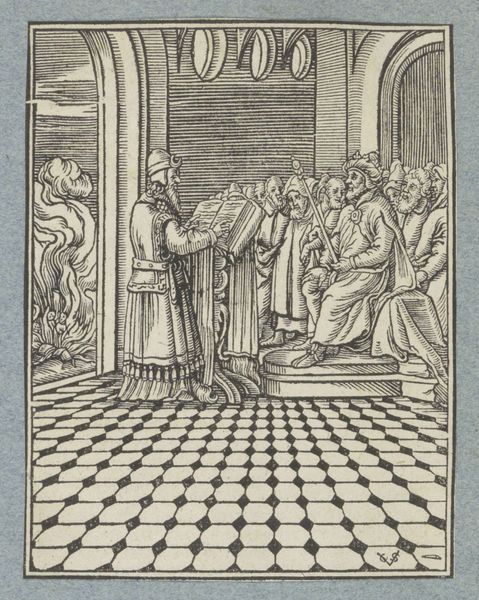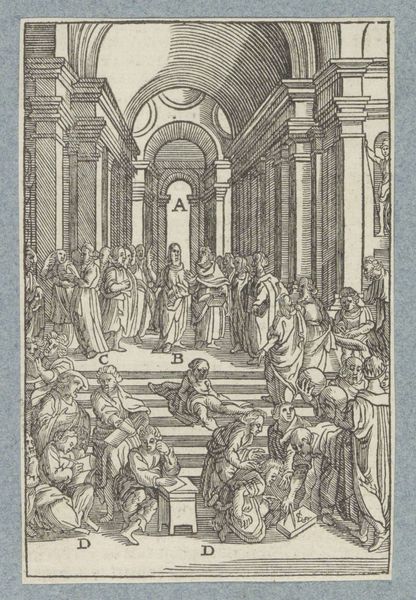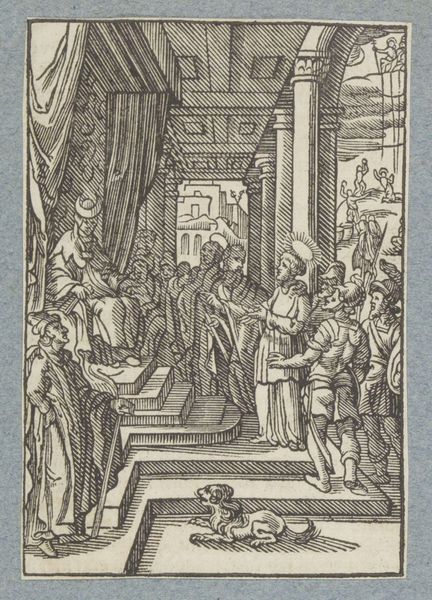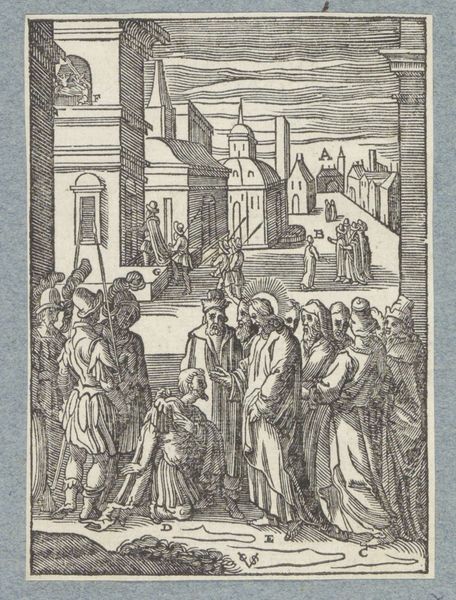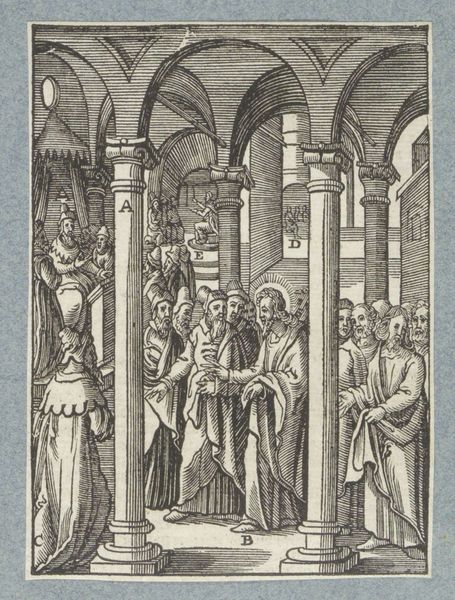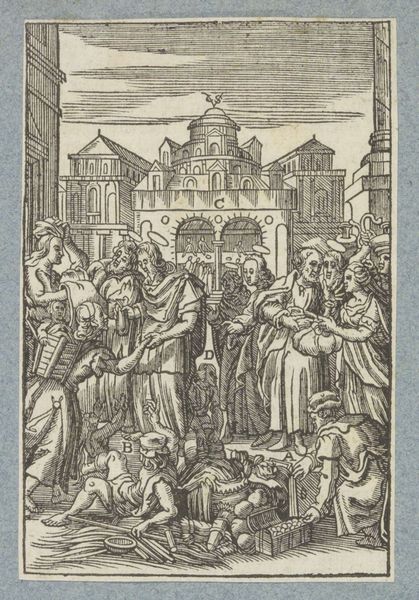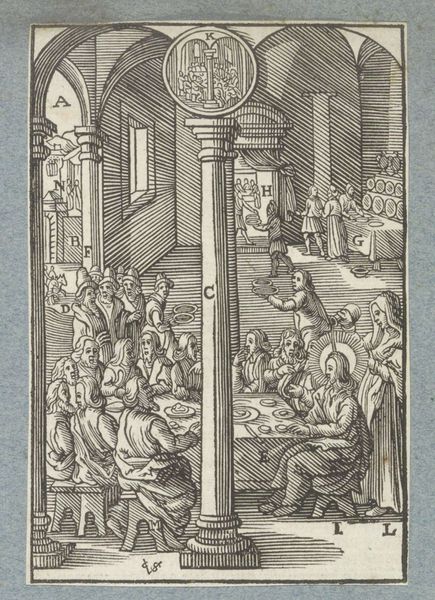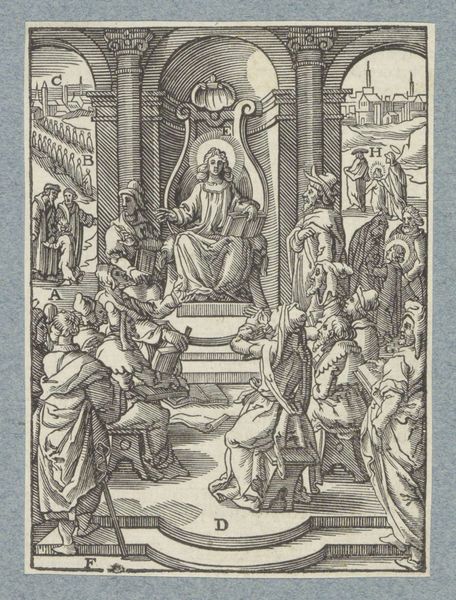
print, engraving
#
baroque
# print
#
figuration
#
line
#
history-painting
#
engraving
Dimensions: height 105 mm, width 74 mm
Copyright: Rijks Museum: Open Domain
Christoffel van Sichem the second made this small woodcut, ‘Vergadering van het Sanhedrin,’ or ‘Meeting of the Sanhedrin,’ sometime before his death in 1658. Woodcut is a relief printing process, meaning the artist carves away the areas that will remain white, leaving the lines to be inked and printed. Look closely, and you’ll notice the relatively coarse quality of the lines. This is a direct result of the material itself. Wood is soft enough to carve easily, but it also has a grain that resists very fine detail. The artist must work with that resistance, resulting in an image with a certain graphic punch. Consider the social context of printmaking at this time. It was a relatively democratic medium, allowing for the wide dissemination of images. Sichem's choice of woodcut, rather than a more refined technique like engraving, speaks to a desire for accessibility. It's a reminder that even in the realm of art, materials and making are never neutral; they carry cultural meaning.
Comments
No comments
Be the first to comment and join the conversation on the ultimate creative platform.
